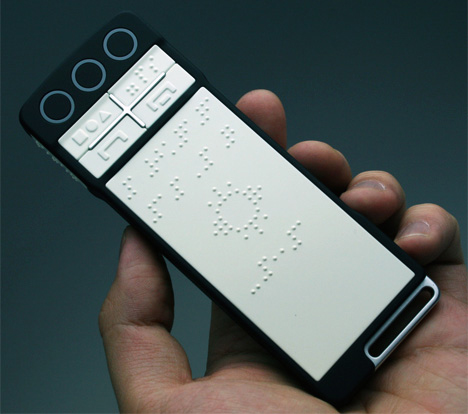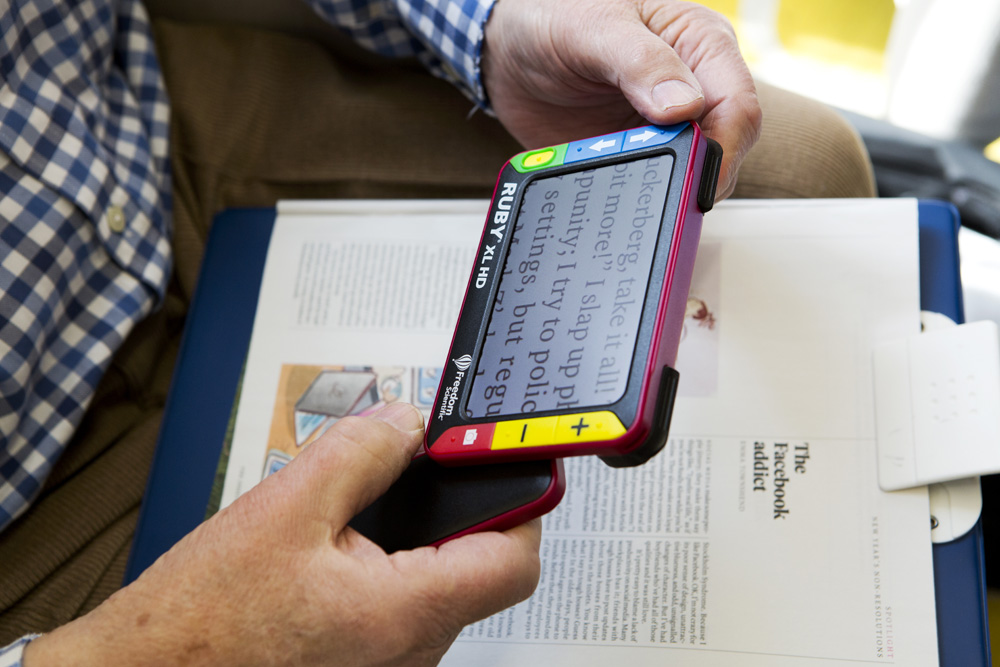Speech-to-Text Devices for Low Vision: Enhancing Convenience
Speech-to-Text Devices for Low Vision: Enhancing Convenience
Blog Article
Discover Cutting-edge Tools Developed for the Aesthetically Damaged
The development of cutting-edge tools for the aesthetically damaged stands for a considerable innovation in ease of access and self-reliance. Technologies such as clever glasses with AI capacities and mobile applications created to give acoustic summaries are reshaping daily experiences for individuals. In addition, wearable gadgets that employ haptic responses improve ecological awareness, while modern Braille advancements offer brand-new means to involve with message. As these devices proceed to evolve, their impact on the lives of those with visual impairments raises essential inquiries regarding the future of inclusivity and freedom in numerous elements of life. What lies in advance in this technical landscape?
Smart Glasses for Navigation

Smart glasses created for navigating are reinventing the means visually impaired people engage with their environment. These advanced gadgets use a combination of camera technology, artificial intelligence, and acoustic comments to supply real-time info regarding surroundings. By utilizing obstacle detection systems, clever glasses can notify users to potential threats, making it possible for much safer wheelchair in both unknown and acquainted setups.
The integration of GPS innovation further boosts navigation abilities, allowing users to obtain acoustic directions as they move. This hands-free method not just cultivates independence yet likewise encourages visually impaired individuals to navigate metropolitan landscapes with raised self-confidence. Additionally, lots of smart glasses are outfitted with attributes that recognize spots and street indicators, providing contextual information that improves the user experience.
Additionally, the growth of these gadgets is constantly advancing, with business working to improve the accuracy of things recognition and increase the range of navigational features. As smart glasses come to be extra cost effective and available, they hold the potential to dramatically change life for visually impaired individuals. Eventually, these ingenious tools represent an important step toward inclusivity, offering enhanced wheelchair and a greater sense of autonomy for individuals browsing the world around them.

Mobile Apps for Daily Living
Just how can mobile applications improve the daily lives of aesthetically damaged individuals? Mobile apps are changing the way visually impaired customers navigate their environments, manage everyday jobs, and accessibility information. These applications provide necessary assistance with different capabilities, cultivating independence and improving quality of life.
Several innovative mobile applications are designed especially for day-to-day living. For instance, applications like Be My Eyes connect visually damaged users with sighted volunteers via video clip calls, enabling them to receive real-time aid with jobs such as reviewing tags or navigating unknown rooms. In A Similar Way, Seeing AI, created by Microsoft, utilizes man-made intelligence to describe environments, checked out message, and identify items, effectively changing a smart device right into an effective tool for day-to-day help.
Additionally, navigation apps customized for the aesthetically impaired, such as Aira and BlindSquare, offer audio-based instructions and ecological info, enabling customers to traverse their environments securely and with confidence. Past navigating and immediate help, mobile apps additionally sustain organization and task management, with features that assist users set reminders, develop to-do lists, and track appointments. In summary, mobile applications work as crucial resources, empowering aesthetically damaged individuals to lead even more independent and meeting lives.
Wearable Technologies for Aid
Empowerment via innovation is progressively evident in the realm of wearable tools developed to help visually damaged people. These innovative tools integrate effortlessly right into every day life, enhancing navigating and supplying necessary comments to customers. Smart glasses furnished with cams can identify faces and review message aloud, allowing customers to communicate even more confidently in specialist and social setups.
An additional remarkable innovation is making use of haptic comments systems in wearable tools. These systems make use of resonances or other tactile signals to convey details about the customer's atmosphere, such as challenges or modifications in terrain, enhancing wheelchair and safety and security. Wearable innovations likewise consist of wristbands that connect to smart devices, alerting individuals to notices with refined resonances, hence boosting connection without reliance on visual cues.
As these innovations continue to develop, Discover More Here they are not dig this just improving self-reliance for aesthetically impaired people yet additionally fostering a greater sense of incorporation in society. By connecting the gap in between challenges faced in everyday living and the capacity for autonomy, wearable modern technologies offer as crucial devices in the mission for equal rights and empowerment for those with visual impairments.
Sound Description Tools
Sound description tools play a vital role in enhancing availability for visually impaired individuals, giving them with the capacity to engage with aesthetic media. Voice-activated assistive devices. These devices use narrated summaries of key visual aspects in films, tv shows, and live efficiencies, ensuring that customers can totally understand the context and feelings conveyed through visuals
Sound description can be integrated right into various platforms, including streaming services, cinema testings, and live movie theater. Lots of popular streaming solutions currently consist of audio description as an accessibility feature, enabling viewers to select it easily. Along with traditional media, specialized applications additionally exist, offering audio descriptions for art exhibits, galleries, and various other cultural occasions.
The effectiveness of audio summary depends upon the skill of the narrators, that have to share visual details succinctly without taking away from the original audio. Innovations in this field are additionally paving the method for more personalized experiences, where individuals can readjust the degree of information and pacing according to their preferences.
Braille Innovations and Devices
Braille tools and technologies have significantly changed the method visually impaired individuals connect with text and info. Modern advancements have brought about the advancement of functional devices that enhance literacy and freedom amongst customers. Significantly, Braille display modern technologies have actually progressed, enabling for dynamic analysis experiences. These tools convert electronic message into Braille, allowing users to access a substantial array of details on computers, smart devices, and tablet computers.
In addition, mobile Braille notetakers incorporate standard Braille input with contemporary functionalities, helping with note-taking, scheduling, and document modifying on the move. Voice-activated assistive devices. These portable devices usually feature text-to-speech capabilities, linking the gap in between Braille and acoustic details
On top this website of that, innovative Braille printers have arised, allowing individuals to generate Braille labels, papers, and academic products efficiently. This availability fosters greater engagement in educational and specialist settings, inevitably promoting inclusivity.
In addition, research into smart Braille innovations remains to broaden. Tools that incorporate fabricated intelligence are being discovered to provide real-time navigating assistance and contextual details, boosting the customer experience in diverse settings. Generally, these technologies mirror a commitment to empowering visually impaired people through modern technology, guaranteeing they can quickly accessibility and engage with the globe around them.

Final Thought
The improvement of cutting-edge devices for the visually impaired significantly enhances freedom and top quality of life. Smart glasses, mobile applications, wearable technologies, audio summary devices, and Braille innovations collectively empower people by providing necessary navigating support, ecological awareness, and enhanced reading experiences. These technologies not only foster better addition yet also advertise freedom in daily tasks, eventually contributing to a more accessible and fair society for aesthetically damaged individuals. Proceeded advancement in this area holds guarantee for further enhancements.
As smart glasses become much more easily accessible and economical, they hold the prospective to significantly change day-to-day life for visually impaired users. Mobile applications are reinventing the means aesthetically damaged individuals navigate their environments, handle everyday jobs, and access information. Applications like Be My Eyes link visually damaged customers with sighted volunteers using video clip phone calls, permitting them to get real-time support with jobs such as reviewing labels or browsing unknown spaces.In addition, navigation apps tailored for the visually damaged, such as Aira and BlindSquare, provide audio-based instructions and environmental info, allowing users to traverse their surroundings safely and confidently.The advancement of innovative devices for the aesthetically impaired significantly improves freedom and high quality of life.
Report this page